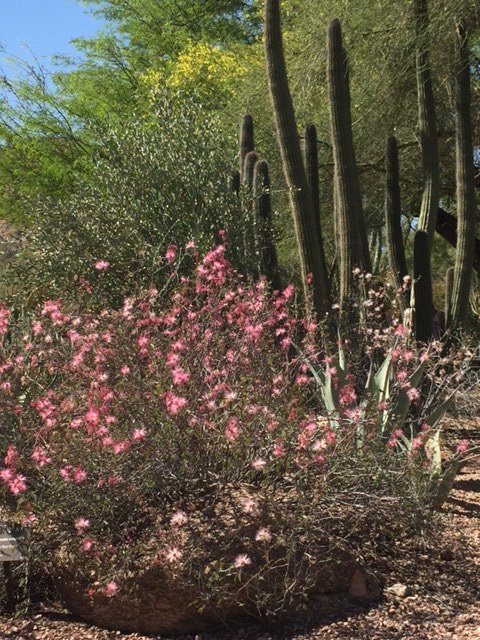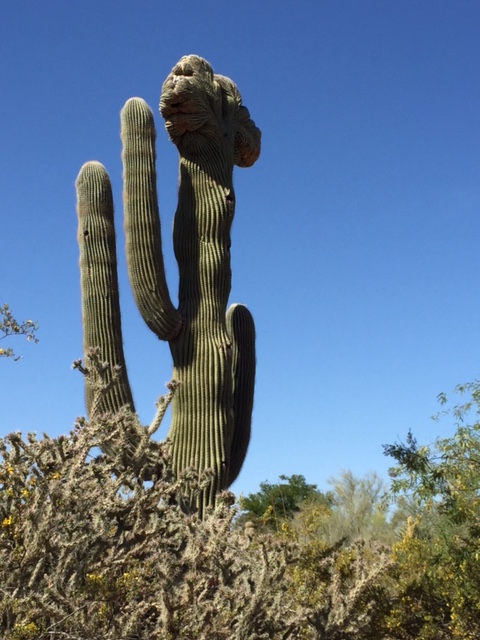The Desert Botanical Garden, established 75 years ago in Phoenix, Arizona, is a living testament to generational foresight. Cactus grow very slowly. Desert winds suck the slightest moisture from the air and ground. Hot dry summer days wilt less extreme flora and fauna. Gustaf Starck, one of the inspirations for the Garden, wrote of this oft-desolate place, the desert: “…[A] world of thrills, excitement and beauty [filled with] weird-looking plants which produce flowers of beauty impossible to describe.”
The Sonoran desert and the desert plants are blooming with life. What might look like a dead plant in other months bristles with tiny green leaves, trumpets its bright red and yellow flowers, or spills its dainty, delicate pink blossoms onto the brown earth after the rains of winter and early spring. Bees hover from plant to plant, savoring the nectar of Mexican poppies. Caterpillars camouflage themselves on broken branches, waiting to swell into colorful butterflies in August and September. Lizards stealthily approach the unshaded sand and gravel warming themselves in full daylight. Birds fly easily from a green-tinted Palo Verde tree spouting leaves to match its bark to a vernal pond surrounded by grasses and cottonwood trees.
You might be familiar with barrel cactus or your local nursery’s succulents and tiny indoor potted cacti. In the desert, though, the Boojum tree (really, a huge cactus with thick trunk and prickly stubs along the trunk), the Palo Verde tree (the “tree” of the state of Arizona), the Chainfruit Chollo cactus (resembling scrambled ropes looped around one another), the snake cactus (long and low, edging along the desert floor beneath upright growing species), the hedgehog cactus (small with woolly spines), and too many other types to count (or remember) dazzle with their hardiness and yes, weirdness. I found familiar visages in these strange plants, like the camel-face or a wizened old man. I walked among towering cacti lining the desert sidewalk, tall and soldier-like, solemn and hardy. I marveled at the delicate flowers, perhaps in color for only a few days, brightening the monochrome desert surroundings.
And finally, the ironworks cactus, resembling and giving life to real cacti as iron has been used to create boxes and barriers to protect cacti from development, from erosion, from humans.
The beauty of the desert environment captures the most lush-loving naturalist.




